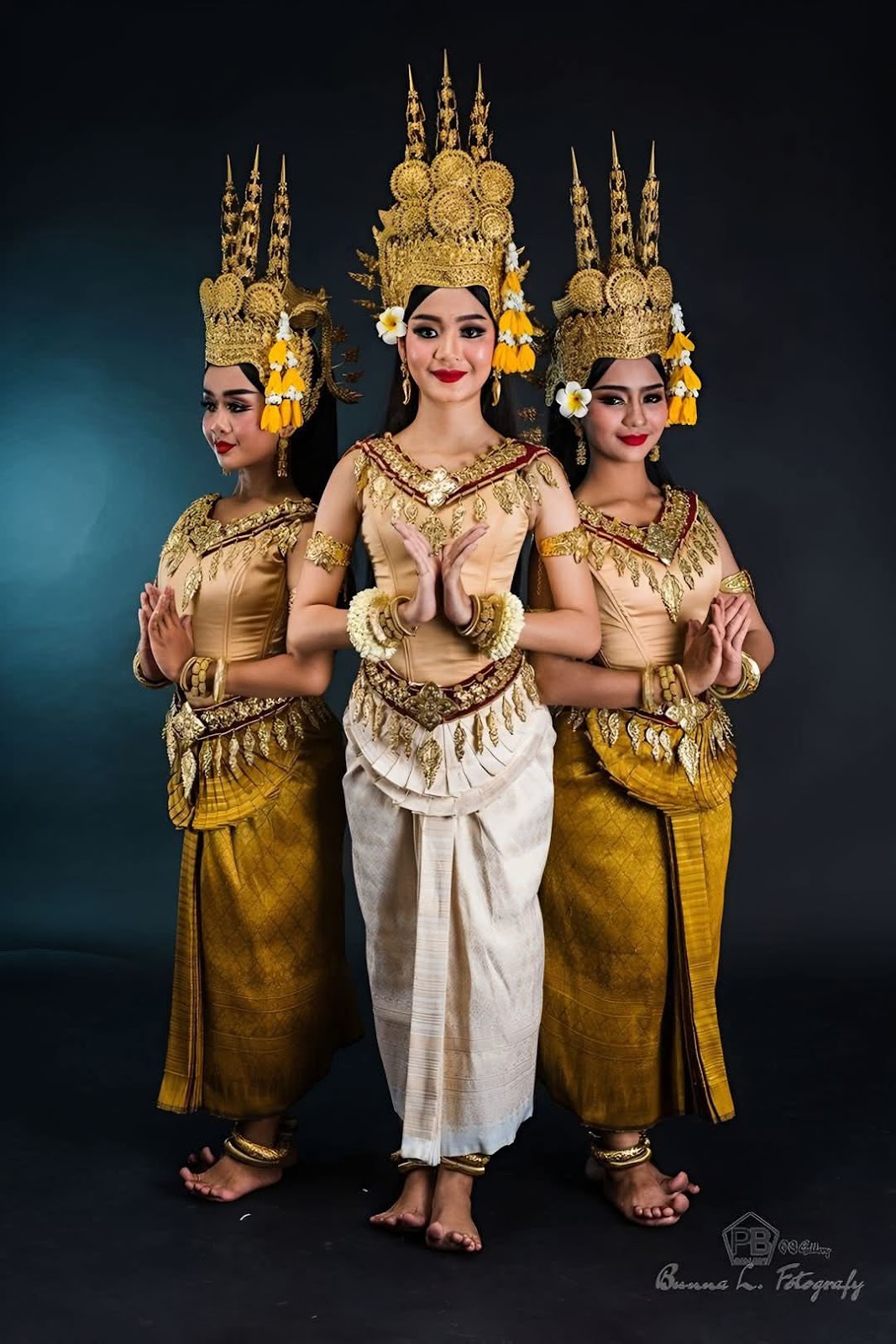The **Apsara** of Cambodia 🇰🇭🇰🇭🇰🇭🇰🇭🇰🇭 is a celestial nymph or spirit in Hindu and Buddhist mythology, often depicted as a beautiful, divine dancer. In **Cambodia**, the Apsara holds deep cultural significance, especially in classical Khmer dance and art.
### **Apsara in Cambodian Culture**
1. **Apsara Dance**
- The **Cambodian Apsara Dance** is a traditional performance inspired by the carvings of **Angkor Wat** and other ancient temples.
- Dancers wear elaborate costumes, golden headdresses, and intricate jewelry, mimicking the graceful poses seen in temple bas-reliefs.
- The dance is slow, elegant, and symbolic, often telling stories from Hindu epics like the **Ramayana** and **Mahabharata**.
2. **Apsara in Angkorian Art**
- The temples of **Angkor Wat, Bayon, and Banteay Srei** feature thousands of Apsara carvings.
- Each Apsara has a unique pose, hairstyle, and expression, showcasing the skill of Khmer artisans.
3. **Mythological Role**
- In Hindu-Buddhist tradition, Apsaras are heavenly dancers who entertain gods and kings.
- Some legends say they were born from the **Churning of the Ocean of Milk**, depicted in Angkor Wat’s famous bas-relief.
4. **Modern Significance**
- The Apsara remains a national symbol of Cambodia, representing beauty, grace, and cultural heritage.
- The **Royal Ballet of Cambodia**, recognized by UNESCO as an Intangible Cultural Heritage, preserves this ancient art form.





















































































